You’d be surprised to learn that there are 2000 types of fruits in the world! Common fruits that start with P include Pear, Pineapple, Peach, Plum, Papaya, Persimmon, Pomegranate, Passion Fruit, Pitaya (Dragon Fruit), Plantain, Peumo, and Prickly Pear!
From juicy treasures to tropical wonders, these fruits possess a unique blend of flavors and vibrant appearances.
So, let’s peel back the layers and savor the flavors of these remarkable fruits that start with the letter “P.”
Pear

Most of the pears in the USA come from the west coast.
Pears come in more than 3000 different varieties globally, with the majority of those sold in the United States originating from the west coast. Unlike apples, pears offer a sweeter flavor and a softer texture. One unique feature of pears is the presence of hard cells called grit or stone cells within their flesh. In terms of appearance, pears are elongated fruits that are narrower near the stem and wider towards the opposite end.
Pears are rich in fiber as well as vitamins K and C.
Pineapple
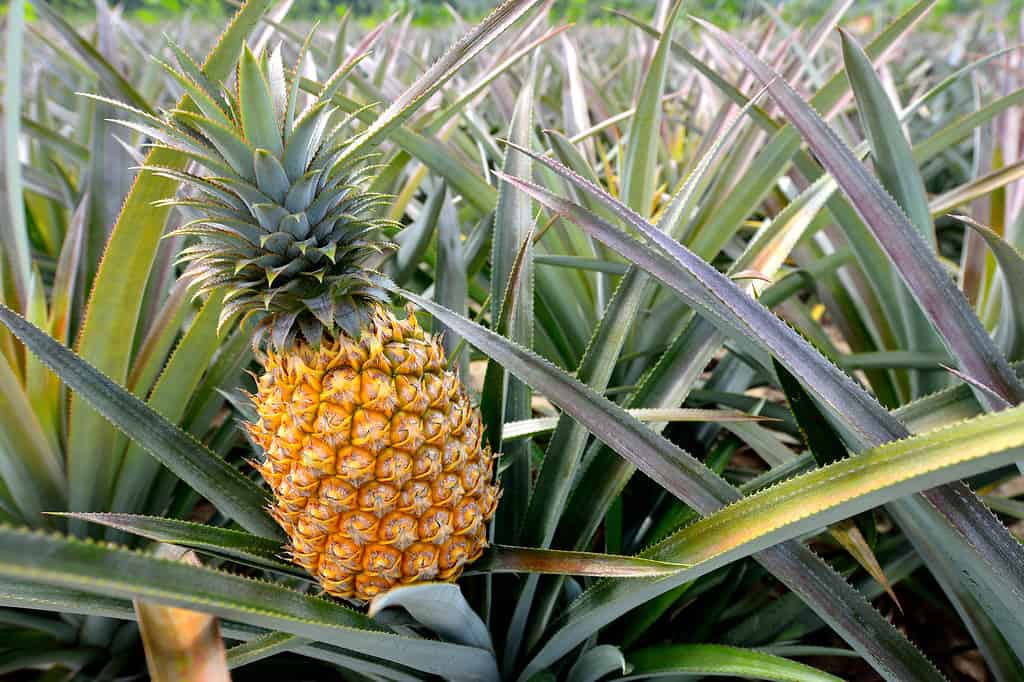
One of the most famous fruits that start with P is the pineapple!
©9comeback/Shutterstock.com
Pineapples are known for their large size, oval shape, and deliciously sweet, juicy, yellow flesh. They have distinctive thick, brown skin. With over 37 varieties cultivated worldwide, each type has its own special qualities.
Of course, pineapples are loaded with nutrients and antioxidants, such as vitamin C, flavonoids, and phenolic acids.
Peach
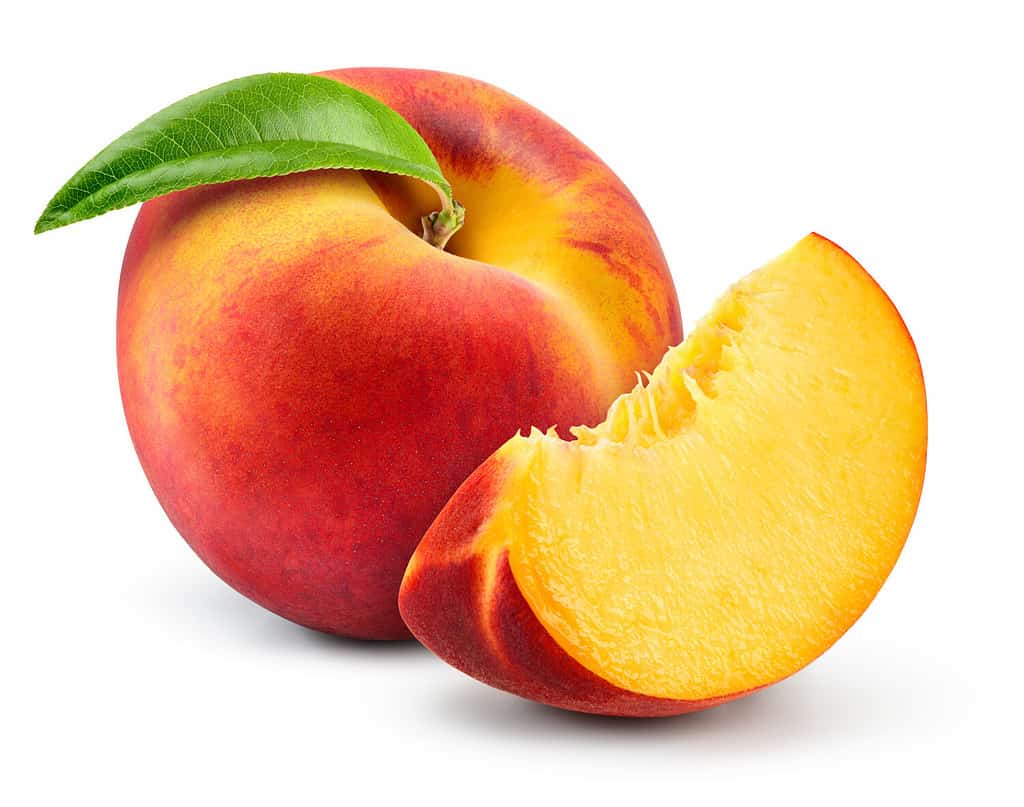
Filled with vitamins, peaches are super nutritious!
©Tim UR/Shutterstock.com
Peaches have a round shape, a velvety and easily peelable skin, and their flesh ranges from yellowish to whitish in color. The flesh is sweet, juicy, and emits a delightful aroma. Depending on the variety, some peaches have freestone pits. In the United States, there are a whopping 300+ distinct peach varieties to choose from.
Peaches are a great source of vitamins C and A!
Plum
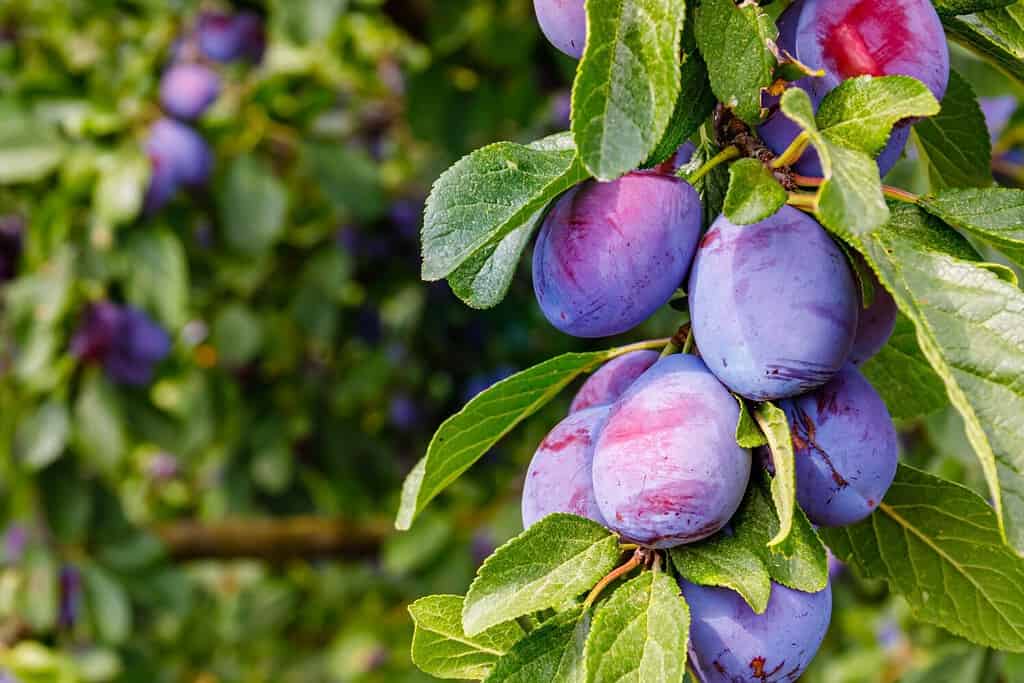
There are over 20 types of plums.
©nnattalli/Shutterstock.com
Plums come in small, sweet, dark reddish-purple packages. They have smooth, edible skin, juicy flesh, and a hard pit at the center. The two most common types are European and Japanese plums. With over 20 different varieties available, plums vary in color, shape, and flavor.
There are many health benefits of plums, including calcium and vitamin C.
Papaya
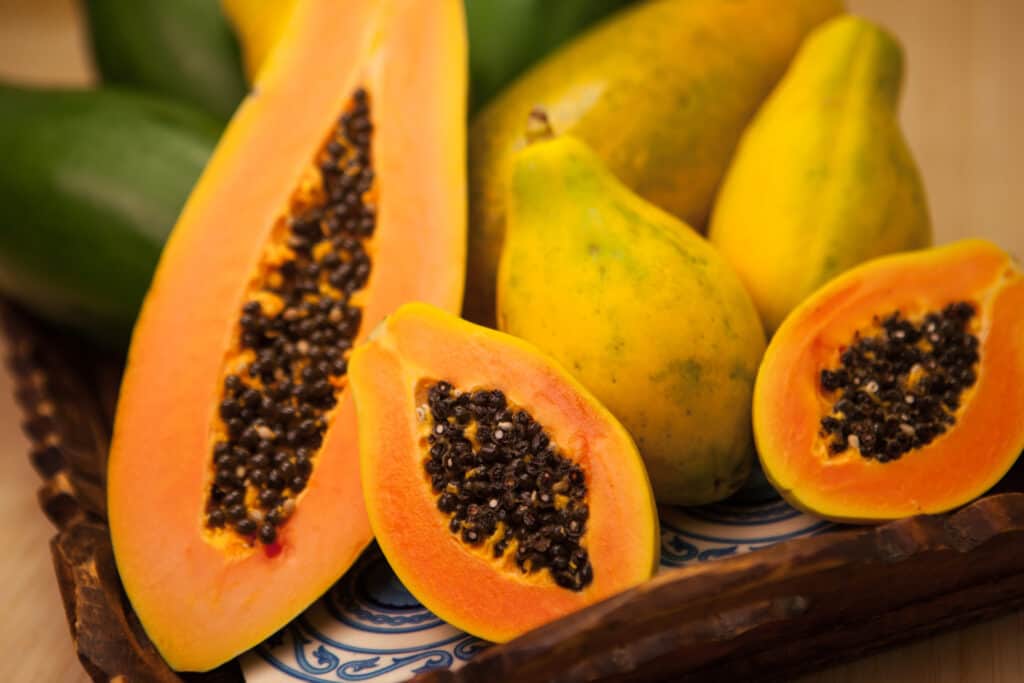
The flesh of the papaya is yellow to orange in color.
©iStock.com/PixoStudio
Papaya packs a lot of nutrients, including vitamins A, C, and E, and its shape and size can vary greatly. The skin starts off smooth, green, and thin when unripe but transforms into a deep orange or yellow color when fully ripe. The flesh can also range from yellow to orange in color.
Persimmon
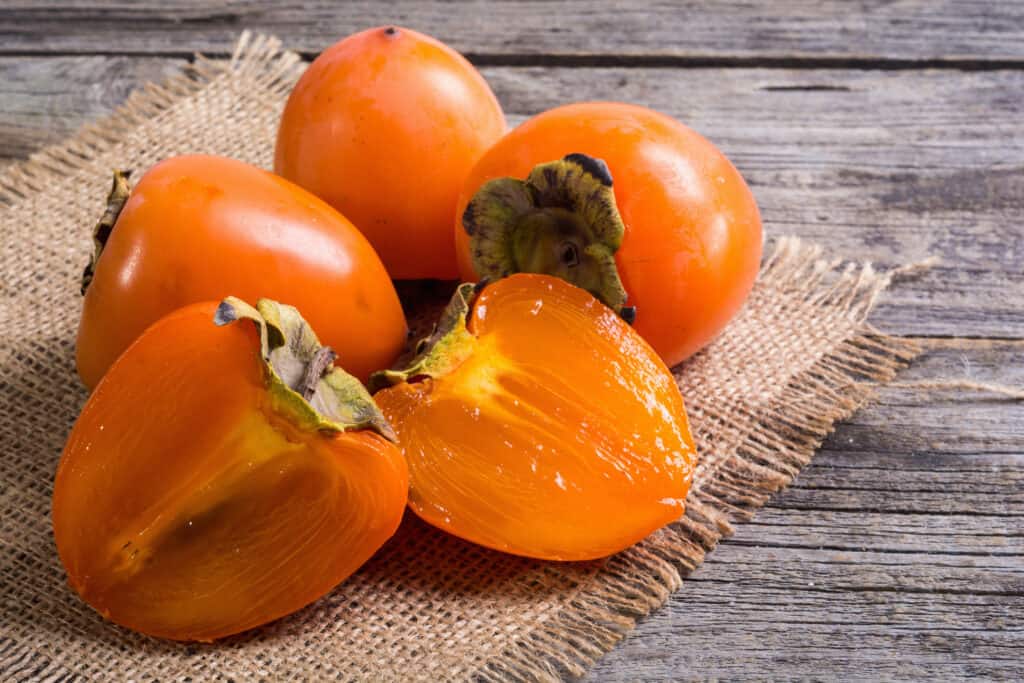
Technically berries, persimmons are the national fruit of Japan.
©AlexeiLogvinovich/Shutterstock.com
Persimmons, with their uniquely sweet and plump nature, are in season during late fall and winter, typically from October to February. Although not typically considered berries, persimmons are, in fact, morphologically classified as berries, similar to tomatoes.
Interestingly, they hold the honor of being the national fruit of Japan. Persimmons are filled with fiber and vitamins A, C, and B6.
Pomegranate
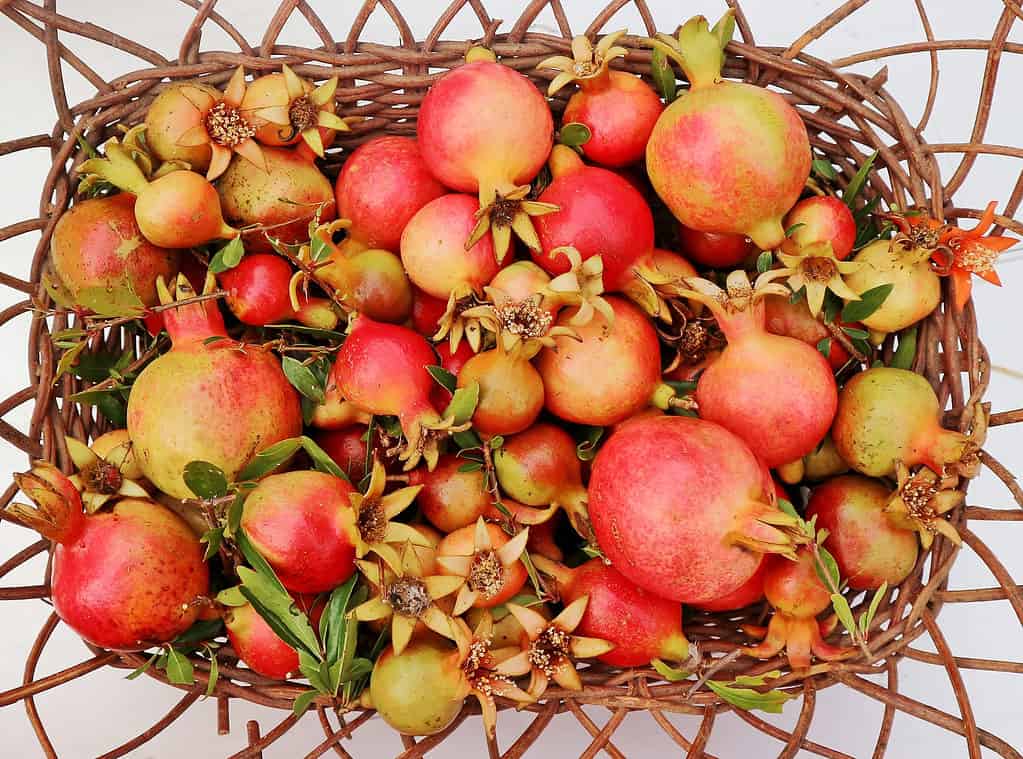
Another fruit that starts with P, pomegranates are rich in vitamins C and K.
©luca pbl/Shutterstock.com
Pomegranates are about the size of a large orange, featuring smooth leathery skin that can range from brownish yellow to red in color. The fruit has an intriguing six-sided shape and is divided into multiple chambers filled with reddish, juicy pulp in thin transparent arils. Each aril surrounds an angular, elongated seed. On top of being simply delicious, pomegranates are a great source of potassium and vitamins C and K.
Pomegranates have been cultivated in around 1200 varieties. In the United States, California is responsible for 99% of pomegranate production.
Passion Fruit
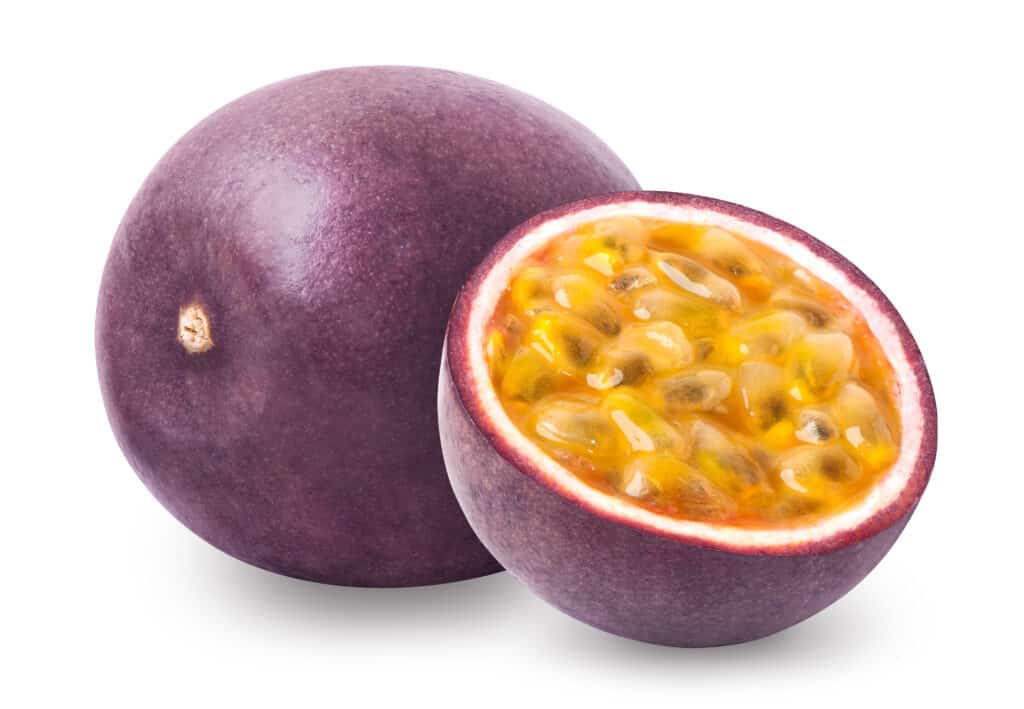
A tropical fruit, passion fruit is filled with delicious seeds.
©Ekaterina Simonova/Shutterstock.com
Passion fruit, originating from North Africa and South America, is a tropical and subtropical fruit. It features round shapes with sturdy outer rinds that can be deep purple or bright yellow in color, encompassing juicy centers filled with seeds. Passion fruit is rich in fiber and vitamins C and A.
In the United States, passion fruit availability varies by location but can generally be found throughout the year.
Pitaya (Dragon Fruit)
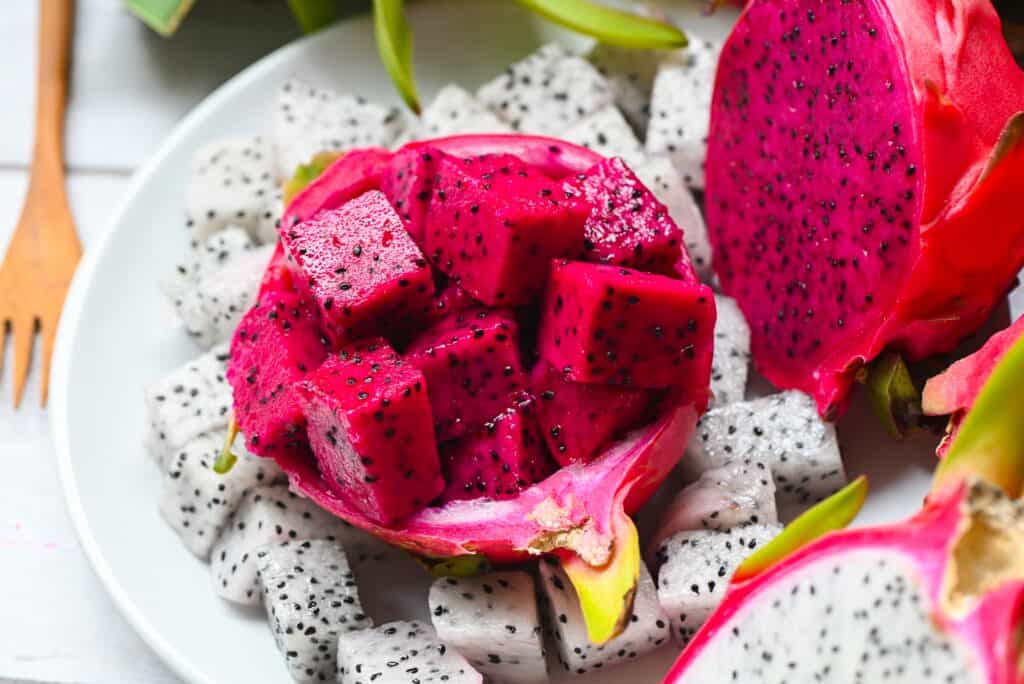
Also known as dragon fruit, pitaya is sweet and cruchy.
©Poring Studio/Shutterstock.com
Pitaya, commonly known as dragon fruit, is a tropical fruit with a delightful combination of sweetness and crunchiness. What’s fascinating is that this fruit comes from a cactus plant! There are four distinct varieties of dragon fruit, and all of them have tiny black seeds that can be eaten just like kiwifruit. Pitaya is the perfect fruit for those wanting a kick of calcium as well as vitamins C and A.
When it comes to the largest supplier of dragon fruit, Vietnam takes the crown. In the United States, you can find commercially grown dragon fruit in just three states: Florida, California, and Hawaii, while the rest is imported from Vietnam.
Plantain

Although a fruit, plantains are cooked like vegetables.
©iStock.com/itsten
Plantains, resembling large bananas, belong to the same family. While technically fruits, they are consumed and cooked like vegetables, similar to tomatoes. Unlike bananas, plantains cannot be eaten raw and have a tougher peel, especially when green.
Plantains are filled with potassium, fiber, and vitamin C.
Peumo
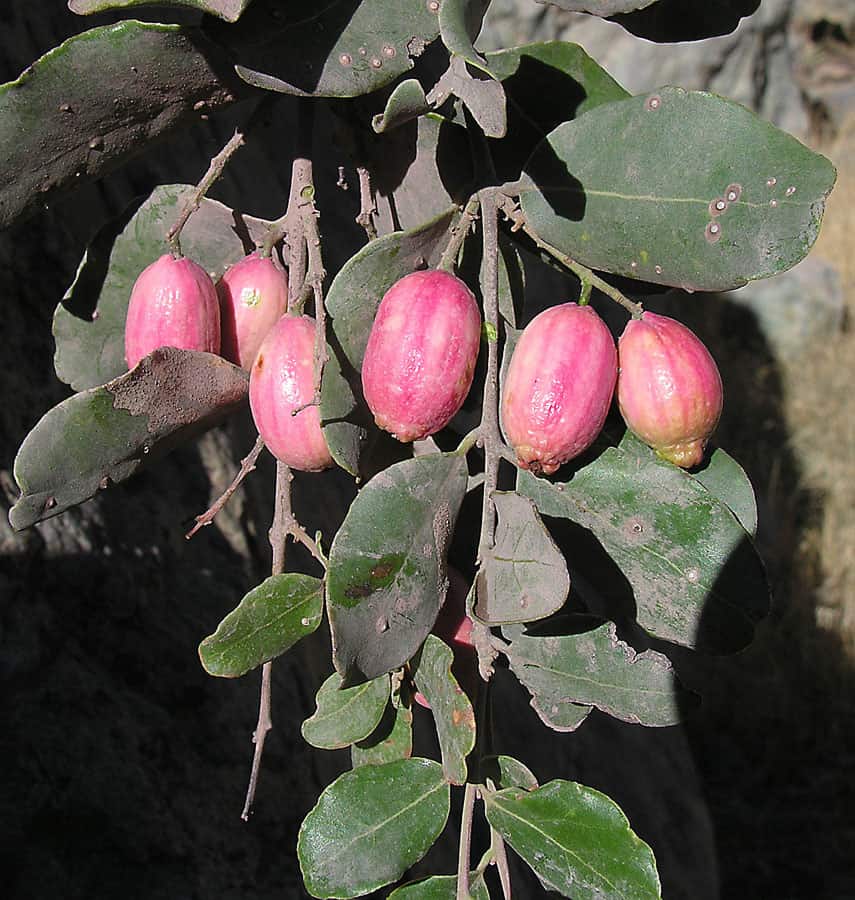
Commonly infused in water, peumo has a strong flavor.
©Dick Culbert from Gibsons, B.C., Canada / CC BY 2.0 – Original / License
Peumo has an edible and pink skin with a strong flavor and aroma when fully ripe. It contains a large seed similar to a nut, making it suitable for culinary purposes. To enhance its taste, the fruit is commonly infused in warm water. This fruit has many benefits, including antioxidants and vitamin C.
Peumo plants, which grow mainly in Argentina and Chile, exhibit remarkable resilience, capable of surviving even when fully covered by snow.
Prickly Pear
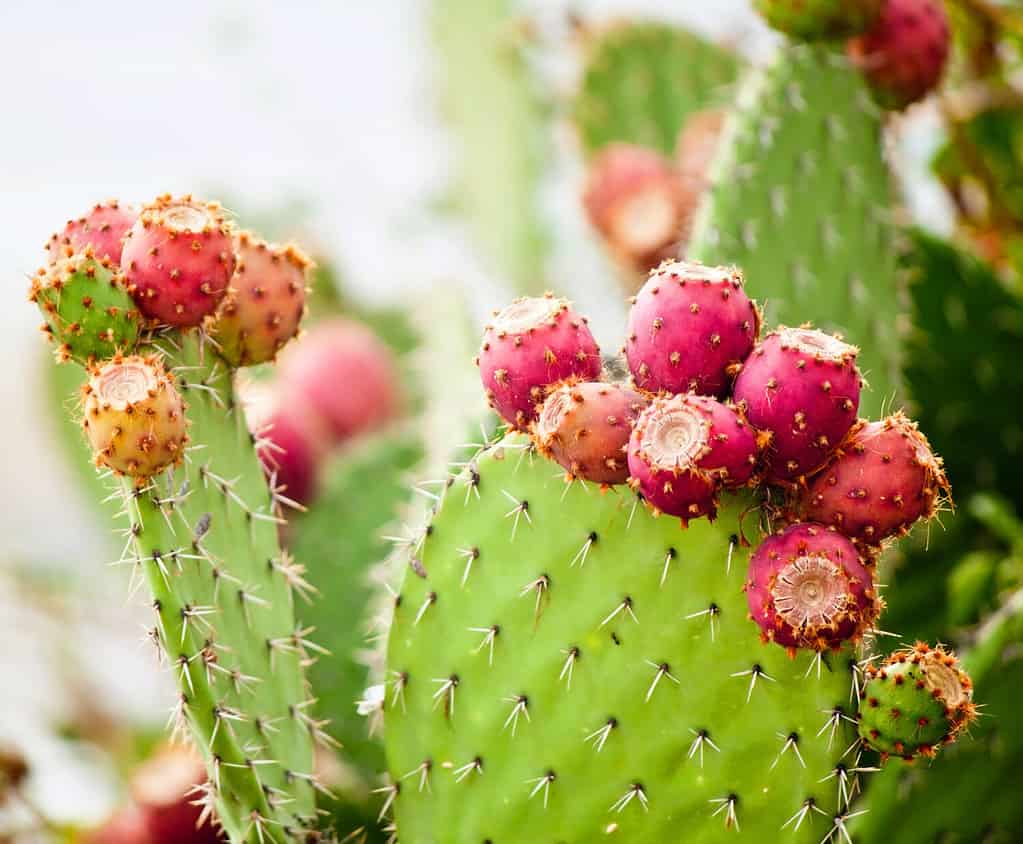
This fruit comes in many colors.
©fischers/Shutterstock.com
Prickly pears come in various colors, including green, red, and pale yellow. Unlike other fruits, the green color does not indicate unripeness. These fruits are incredibly sweet, offering a unique and distinctive flavor. Prickly pears are known for being juicy and filled with seeds.
They belong to an ancient group within the cactus family, boasting around 150 species. Prickly pears are great for your health, boasting benefits like fiber and vitamin C.
Persian Lime
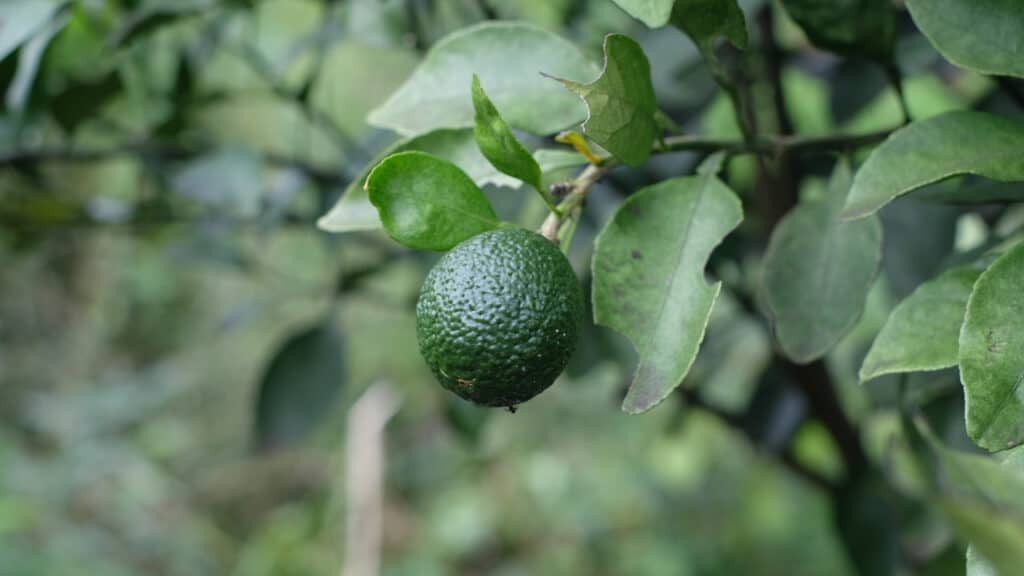
Similar in size to lemons, Persian limes are seedless.
©LUCKY PEOPLE/Shutterstock.com
Persian limes have an oval shape and are similar in size to lemons. Their vibrant green peel gradually turns yellow when fully ripe. With proper care, citrus trees bearing Persian limes can provide decades of flavorful fruit.
This variety is seedless and larger than key limes, offering a sweeter taste, making it a perfect vitamin-C-filled beverage choice.
Pineberry

Descendants of strawberries, pineberries are native to Chile.
Pineberries are small and rounded berries with a conical shape that tapers to a point. They have a unique appearance, featuring white to ivory skin with hints of pale pink and red seeds. These berries possess a delightful aroma and offer a distinct flavor reminiscent of pineapples.
Originally native to two cities in Chile, pineberries were later cultivated in the Netherlands and became commercially available in 2010. It’s interesting to note that pineberries are descendants of strawberries. These fruits contain folic acid as well as vitamins A and C.
Pomelo
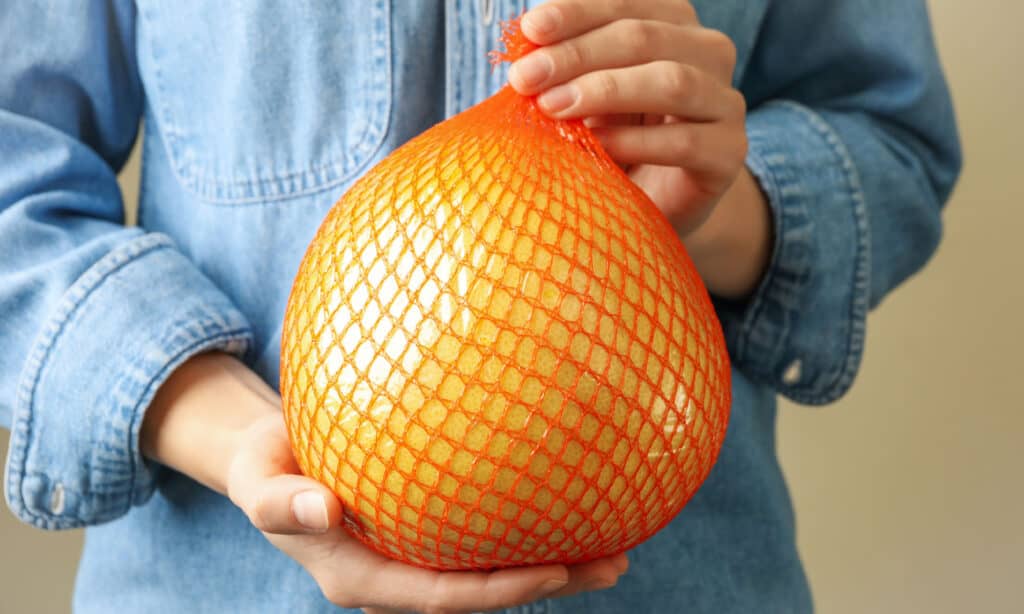
A citrus fruit, the pomelo is rich in vitamin C and potassium.
©iStock.com/AtlasStudio
Pomelo, a citrus fruit, thrives in tropical regions of Asia. When ripe, the skin of the fruit turns green to yellow. The inner flesh, which can be pink, white, or cream-colored, offers a range of flavors from sweet to sour and sometimes even bitter and acidic.
With over 60 known varieties, pomelos are diverse. They flourish in warm climates, and in the United States, they are mainly grown in Florida and California. These fruits are a great source of potassium and vitamin C.
Pequi
Pequi, a fruit native to Brazil, holds significant potential for sustainable use in Central Brazil. It has a peculiar and almost endearing appearance, though its smell may be quite strange. While the fruit offers a unique flavor and is rich in nutrients, like vitamins A and E, it should be eaten with caution.
This is because pequi contains a toxin called cardol, which, if consumed excessively, can lead to symptoms such as nausea, vomiting, and in severe cases, even death.
Pepino Melon
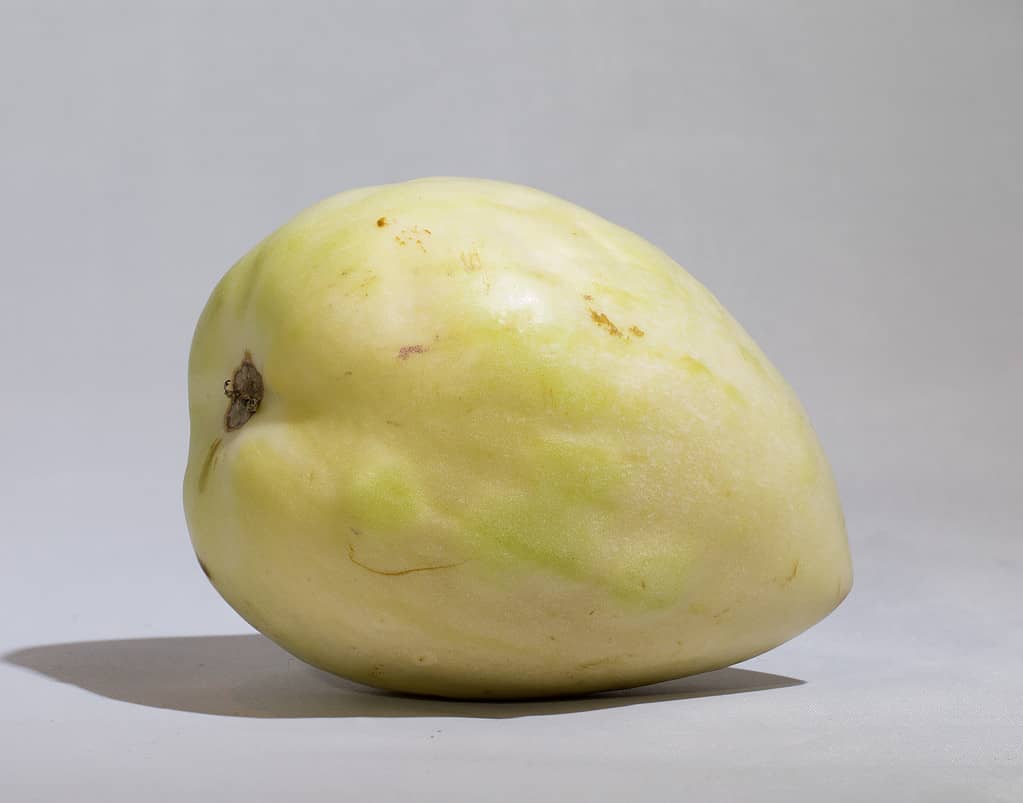
Originally from Peru, pepino melons are sweet fruits.
Pepino melon is a sweet fruit that thrives in warm climates and originates from Peru. It grows on an evergreen bush and features soft, edible golden skin with unique purple and greenish-yellow stripes. The pepino’s flesh is highly prized for its delightful aroma reminiscent of vanilla and hints of honey. Plus, this fruit is filled with vitamins A, C, K, and B!
Pawpaw
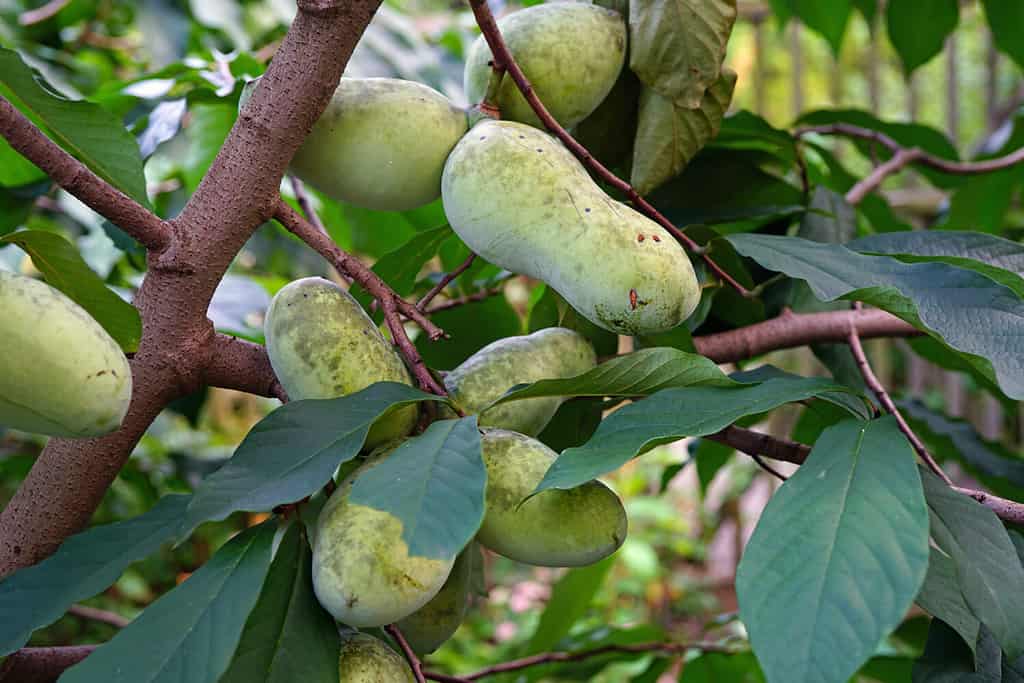
The largest edible fruit native to the USA is the pawpaw.
©EQRoy/Shutterstock.com
The pawpaw holds the title of being the largest edible fruit native to the US. It is indigenous to 26 states across the country. With a unique flavor reminiscent of a tropical medley, including banana, pineapple, and mango, pawpaws are a delightful substitute for bananas in various recipes. Furthermore, they are nutritious, high in magnesium and vitamin C.
While many enjoy eating pawpaws raw, freshly picked from the tree, their versatile nature allows for diverse culinary uses, ensuring the tropical flavors can be savored long after the harvest season ends.
Pulasan

Native to Malaysia and Singapore, the pulasan fruit is covered in soft spines.
Pulasan is a tropical evergreen tree native to western Malaysia and Singapore. Its fruits have an ovoid shape and range in color from dark red to yellow, covered in soft spines. The sweet and juicy pulp encases a single seed. Despite being a desirable relative of the lychee filled with vitamin C, the pulasan is a lesser-known fruit. There are two varieties, one dark red and the other light red, both originating from Peninsular Malaysia.
Picual Olive
The Spanish Picual olive variety is highly esteemed for its rich, nutty oil and sweet aroma. Originating from Spain, it is primarily cultivated for its high-quality oil. The fruit is prolate spheroid in shape, similar to a pointy egg. It yields a generous amount of mild oil. The oil exhibits a bitter and fruity flavor, complemented by a raw green apple aroma.
Comprehensive List of All Fruits That Start With P
- Pear
- Pineapple
- Peach
- Plum
- Papaya
- Persimmon
- Pomegranate
- Passion Fruit
- Pitaya
- Plantain
- Peumo
- Pricky Pear
- Persian Lime
- Pineberry
- Pomelo
- Pequi
- Pepino Melon
- Pawpaw
- Pulasan
- Picual Olive
- Pacific Rose Apple
- Palestinian Sweet Lime
- Parsonage Pear
- Petit Rouge Grape
- Pigeon Plum
- Pili Nut Fruit
- Pink Lady Apples
- Pink Pearl Apple
- Pinot Noir Grape
- Pinova Apple
- Peruvian Groundcherry
- Pomato Fruit
- Ponkan Fruit
- Ponderosa Lemon
- Purple Mangosteen Fruit
- Pinon (Pine Nut)
- Pecan
- Petit Manseng Grape
- Pigface Fruit
- Physalis Fruit
- Peanuts
- Peach Palm Fruit
- Pigeon Pea
- Pluot (Hybrid of a plum and apricot)
- Plumcot
- Pie Pumpkins
- Pignut Hickory
- Pink Banana
- Pink Lemonade Blueberries
- Poorman Orange
Please note that this list includes both fruits in the botanical sense, and fruits in the culinary sense (like peanuts and pumpkins), which are often considered vegetables. Some of these may also be hybrids or cultivars of other fruits, but they are generally considered distinct.
Summary of Fruits That Start With P
| Fruit | Taste | Benefits |
|---|---|---|
| Pear | Sweet & tangy | Fiber, vitamins K & C |
| Pineapple | Sweet & tart | Antioxidant & vitamin C |
| Peach | Sweet with little acidity | Vitamins C & A |
| Plum | Sweet & sour | Calcium & vitamin C |
| Papaya | Blend of banana, peach & mango | Vitamins A, C & E |
| Persimmon | Honey like flavor | Fiber, vitamins A, C & B6 |
| Pomegranate | Tart with little sweetness | Potassium, vitamins C & K |
| Passion Fruit | Sour to very sweet | Fiber, vitamins C & A |
| Pitaya | Mild sweet | Calcium, vitamins C & A |
| Plantain | Savory to sweet | Potassium, fiber, & vitamin C |
| Peumo | Unpleasent unless infused in warm water | Antioxidants & vitamin C |
| Pricky Pear | Sweet with tart undertone | Fiber & vitamin C |
| Persian Lime | Tart & acidic | Vitamin C |
| Pineberry | Strawberry flavor with little acidicty | Folate, vitamin A & C |
| Pomelo | Sweet & tart with sharp acidity | Potassium & vitamin C |
| Pequi | Cheesy, sweety and fruity | Vitamins A & E |
| Pepino Melon | Mild sweet melon | Vitamins A, C, K & B |
| Pawpaw | Tart & sweet | Magnesium & vitamin C |
| Pulasan | Sweet and juicy | Vitamin C |
| Picual Olive | Fruity, little bitterness & light peppery | Vitamin E |
Thank you for reading! Have some feedback for us? Contact the AZ Animals editorial team.









